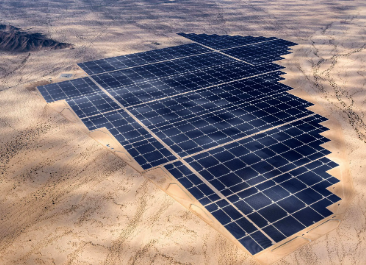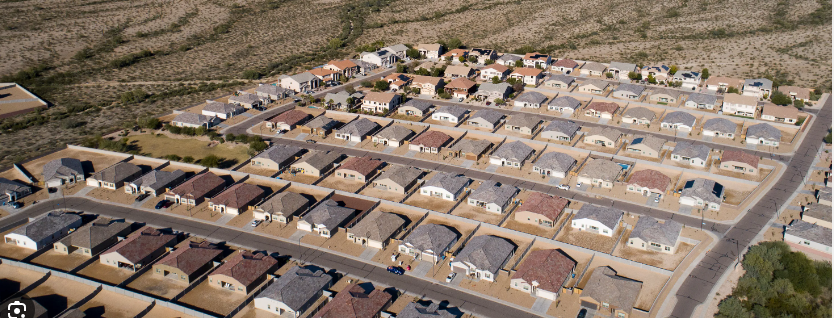Straight Arrow
Well-known member
Take it outside boys!
Follow along with the video below to see how to install our site as a web app on your home screen.
Note: This feature may not be available in some browsers.
My expectation is that a conservation non profit with a mission to "work on behalf and wild public lands" treats a solar development the same way it would treat Bishops plans to sell it off for housing. Either way those public lands are getting the shaft.please tell me what your expectation is and what bright ideas you have on how to turn the energy industry monster (all of it) around?
That’s a fair expectation. I just think it’s important to understand that doesn’t mean every single project can be stopped. There’s something like over 800 mines that operate on federal public lands across the country. BHA has only opposed a small fraction. Not only would it be insanely difficult to interject into every single proposed energy project, but it would be impossible to do from a volunteer or non-profit standpoint.My expectation is that a conservation non profit with a mission to "work on behalf and wild public lands" treats a solar development the same way it would treat Bishops plans to sell it off for housing. Either way those public lands are getting the shaft.
I certainly don't disagree that there are more problems than resources. But I for one don't see a coal mine the same as a permanent solar facility, I think you could even question whether or not a permanent development is truly a multiple use or an exclusive use.That’s a fair expectation. I just think it’s important to understand that doesn’t mean every single project can be stopped. There’s something like over 800 mines that operate on federal public lands across the country. BHA has only opposed a small fraction. Not only would it be insanely difficult to interject into every single proposed energy project, but it would be impossible to do from a volunteer or non-profit standpoint.
Throw on top of that fact that it is the BLM’s mandate, essentially required by law, to entertain and make accommodations for these energy projects.
I don’t think there’s anybody involved with BHA that given the opportunity wouldn’t waive a magic wand and make all development disappear off public lands to some degree. Buts that not the reality we live in, it’s not practical or feasible.
So again, where does that leave us? Participating in the process. Commenting on management plants, getting involved in legislation(like PLREDA), to work towards amenable paths forward. Picking battles, picking which hills we are willing to die on and where we can allocate volunteer time and energy.
There’s no shortage of issues, and a severe shortage of thoughtful and determined people willing to get involved and show up.
“The men who act without thinking, and the men who both think and act, are the ones who mould the world. The man who thinks and does not act never moulds the world. He may think that he does — but that, too, is only a thought, the thought of a deedless, actionless thinker.” –Jack London’s letter to Philo M. Buck, Jr., July 19, 1913
That’s a fair expectation. I just think it’s important to understand that doesn’t mean every single project can be stopped. There’s something like over 800 mines that operate on federal public lands across the country. BHA has only opposed a small fraction. Not only would it be insanely difficult to interject into every single proposed energy project, but it would be impossible to do from a volunteer or non-profit standpoint.
Throw on top of that fact that it is the BLM’s mandate, essentially required by law, to entertain and make accommodations for these energy projects.
I don’t think there’s anybody involved with BHA that given the opportunity wouldn’t waive a magic wand and make all development disappear off public lands to some degree. Buts that not the reality we live in, it’s not practical or feasible.
So again, where does that leave us? Participating in the process. Commenting on management plants, getting involved in legislation(like PLREDA), to work towards amenable paths forward. Picking battles, picking which hills we are willing to die on and where we can allocate volunteer time and energy.
There’s no shortage of issues, and a severe shortage of thoughtful and determined people willing to get involved and show up.
“The men who act without thinking, and the men who both think and act, are the ones who mould the world. The man who thinks and does not act never moulds the world. He may think that he does — but that, too, is only a thought, the thought of a deedless, actionless thinker.” –Jack London’s letter to Philo M. Buck, Jr., July 19, 1913
Roosevelt saved about 230 million acres. The folks using his name, are looking at development in 220 million.
Yeah, I would agree these are not always apples to apples comparisons in terms of impact. I would also agree a solar field is not multiple use, at least not where the solar field physically sits. But neither is an oil pad, or a mine, where they physically sit. But I don't think that defines the scope or scale that instructs the BLM on how to view these things through the lens of management at a landscape wide level.I certainly don't disagree that there are more problems than resources. But I for one don't see a coal mine the same as a permanent solar facility, I think you could even question whether or not a permanent development is truly a multiple use or an exclusive use.
Was Chaffetz's proposal a hill to die on? It was almost 4x bigger but would have achieved the same outcome, private party permanent development of public lands. It sure felt like it at the time. This feels pretty similar to me.
I think we all agree that some of the best hunting and habitat occurs in areas that were logged but is that true of solar farms too, or is that multiple use different?Nothing is these two sentences is true. Roosevelt put aside those acreages for managed timber production under a multiple use mandate as much as anything else. The current admin is not proposing development on 22 million acres.
Political speech is designed to obfuscate the issue and enflame passions. Not get to the bottom of an issue.
Here's another windmill to tilt at boys: https://wyofile.com/lawmakers-float-10m-stimulus-for-enhanced-oil-recovery-in-wyoming/?utm_source=WyoFile&utm_campaign=5d7df96fde-EMAIL_CAMPAIGN_2024_01_31_09_44&utm_medium=email&utm_term=0_-5d7df96fde-[LIST_EMAIL_ID]


I think people's view of multiple use is pretty well situated in fantasyland.I certainly don't disagree that there are more problems than resources. But I for one don't see a coal mine the same as a permanent solar facility, I think you could even question whether or not a permanent development is truly a multiple use or an exclusive use.
Was Chaffetz's proposal a hill to die on? It was almost 4x bigger but would have achieved the same outcome, private party permanent development of public lands. It sure felt like it at the time. This feels pretty similar to me.
I think people's view of multiple use is pretty well situated in fantasyland.
Multiple use doesn't mean, and was never intended to mean, that every acre have an oil well, wildlife preserve, atv trail, coal mine, solar field, migration corridor, etc. etc.
The intent was to make the judicious use of the land for the greatest good, over the longest time, for the most people.
People tend to think their idea of what the greatest use or good of any particular acre/area is ALL that should be considered. Every other use is viewed as a direct conflict, which many times, is absolutely true. Other times, I think many fight for the sake of the fight, they live for the feud if you will.
The thing that should be considered is more a landscape scale view of multiple use. Again, IMO, its best to keep your powder dry and oppose the development in areas that are critical to wildlife values, recreational values, and where development will have major impacts on other uses of that public land.
IMO, that's the flaw, and also at times, the beauty of multiple use mandates.
I could also make the argument that wind farms and solar farms are not a permanent loss to development. Way different than a housing development, interstate highway, etc. and much easier to convert back to a naturalish setting. More akin to reclaiming a coal mine once the resources are extracted.
History has shown us that industry rarely does anything obviously unprofitable without massive gov't intervention.
Yes please comment! If not somewhere else, ask that development be done in places outside of critical wildlife habitat. In general, there is enough lower conservation value land to support the BLM's forseeable development scenario. My thinking is that this development is coming to public land whether we like it or not, through this PEIS we can help shape what that looks like and where it goes. Maybe I am too optimistic...Here is the link to comment straight to the BLM on the proposal: https://www.trcp.org/action-alert/safeguard-big-game-habitat-in-blm-solar-plan/
Let them know we want this done somewhere else.